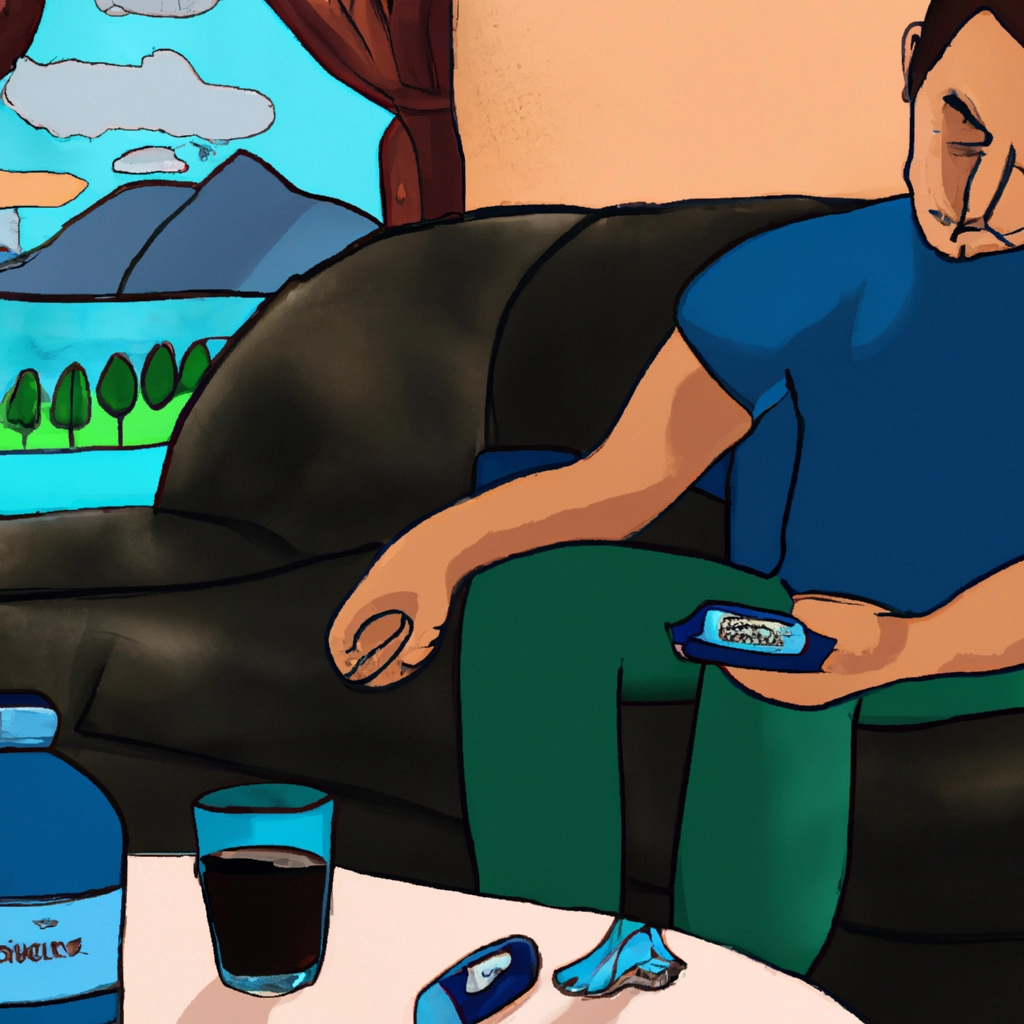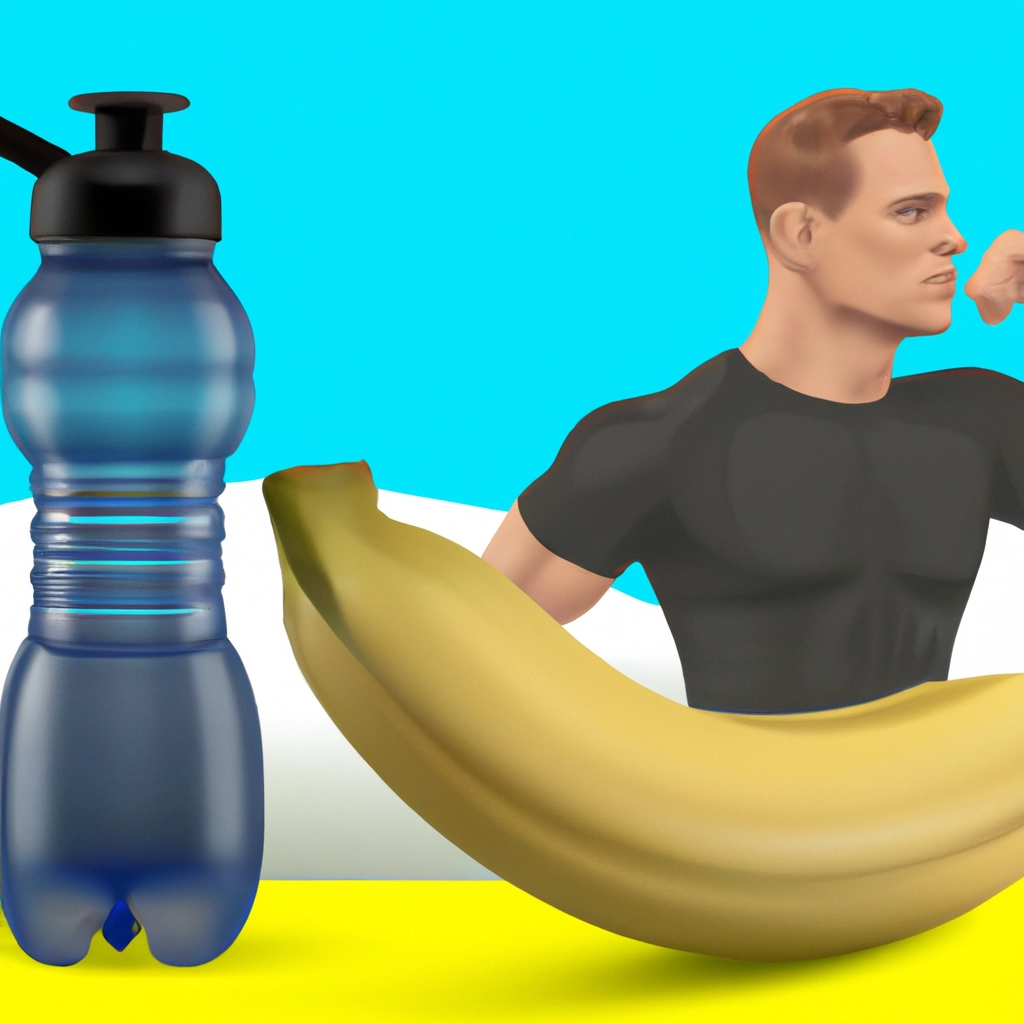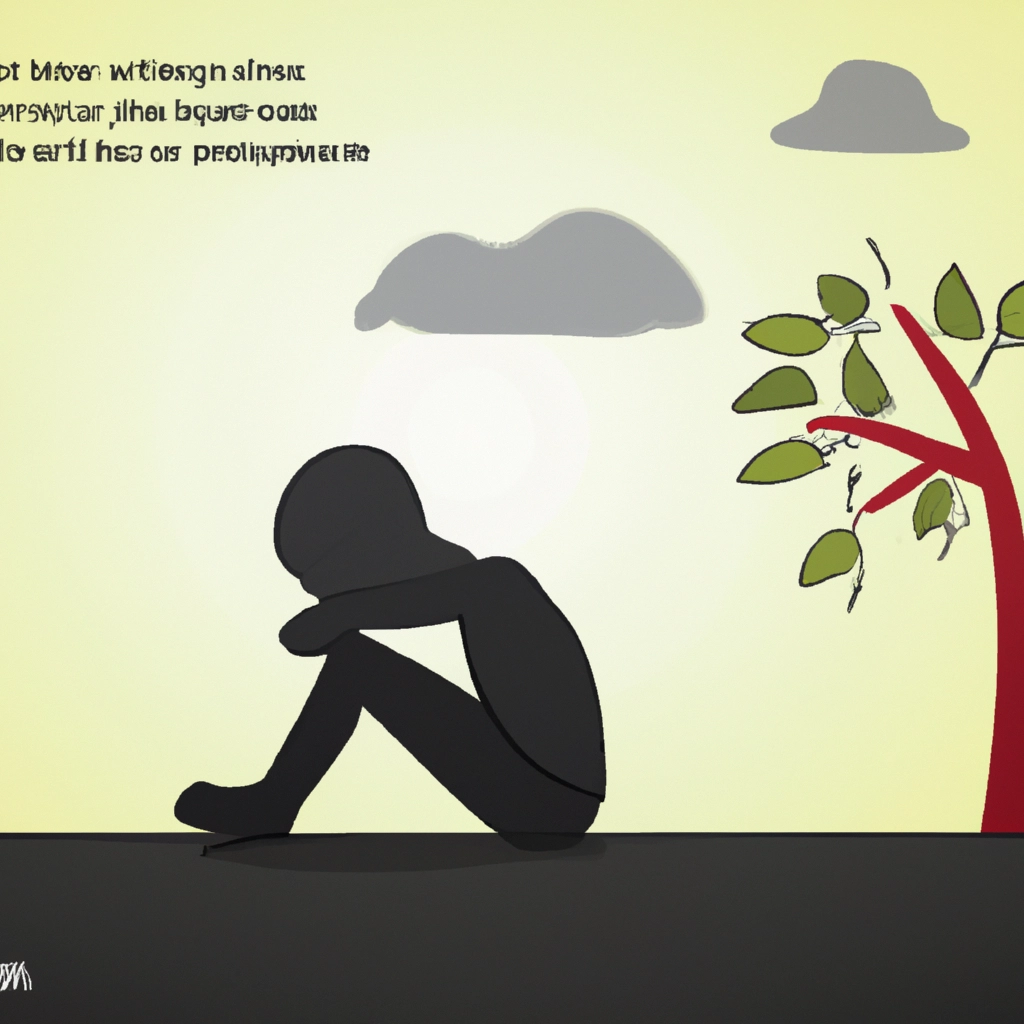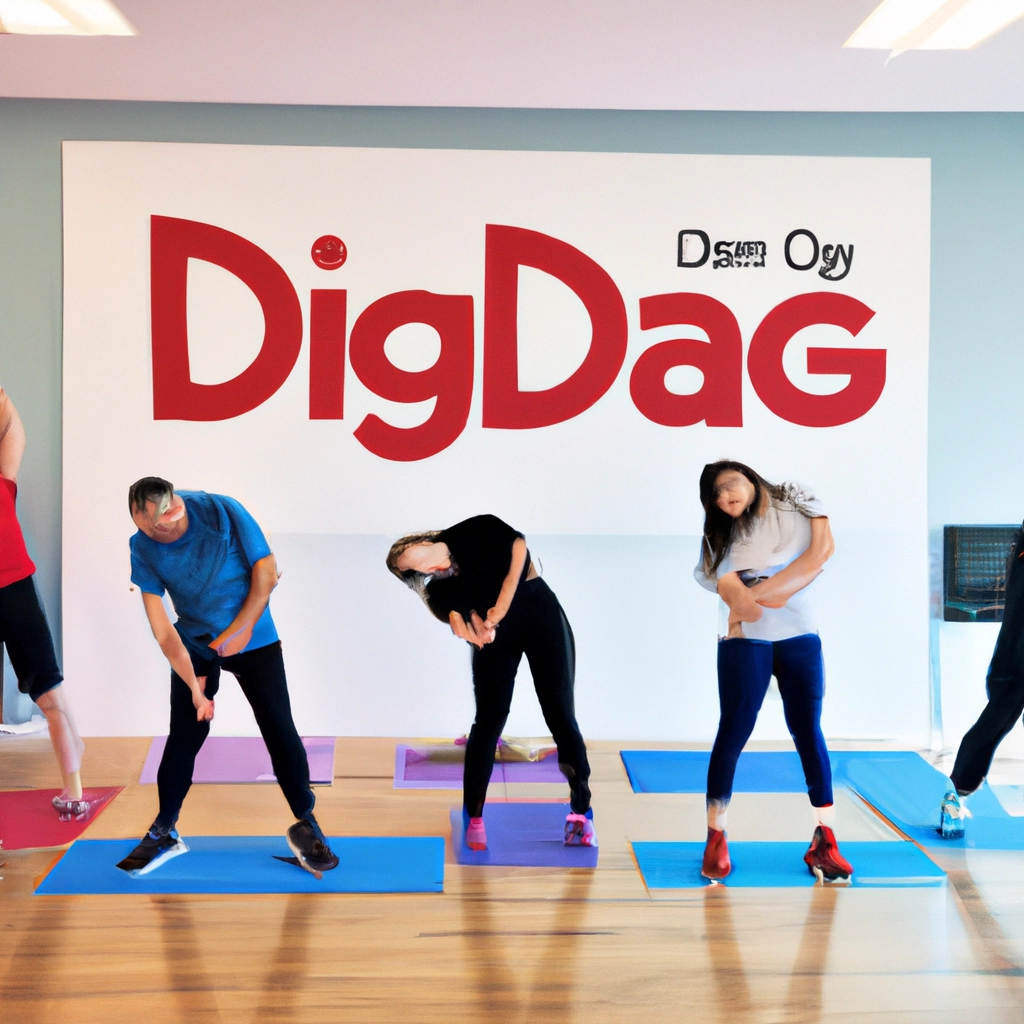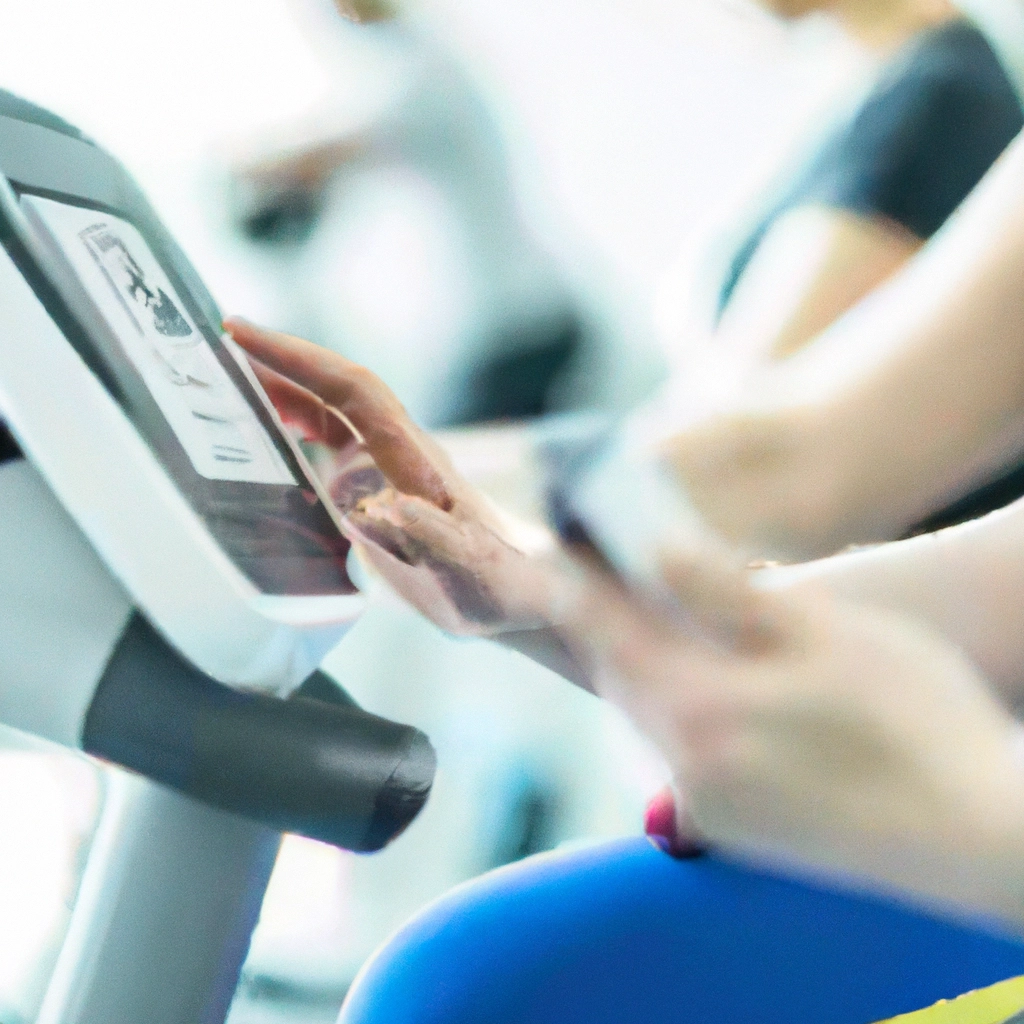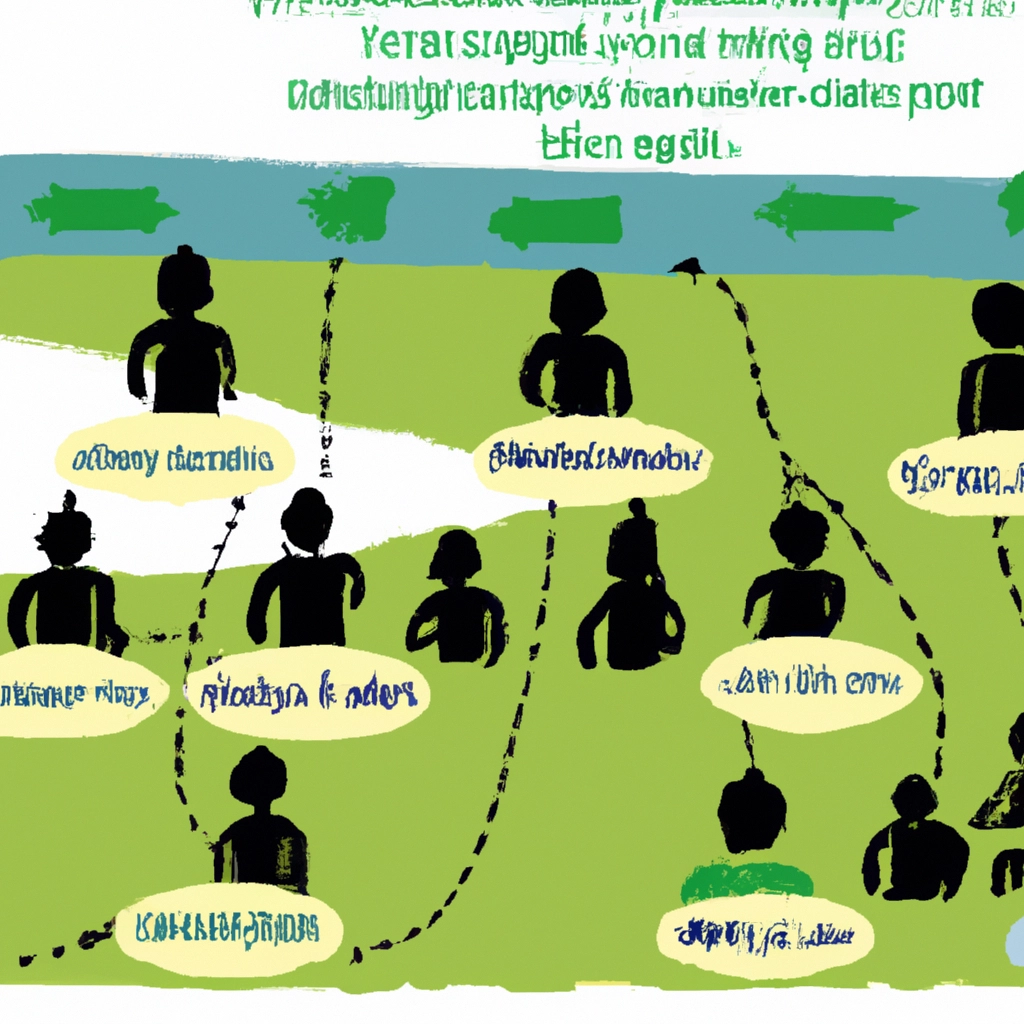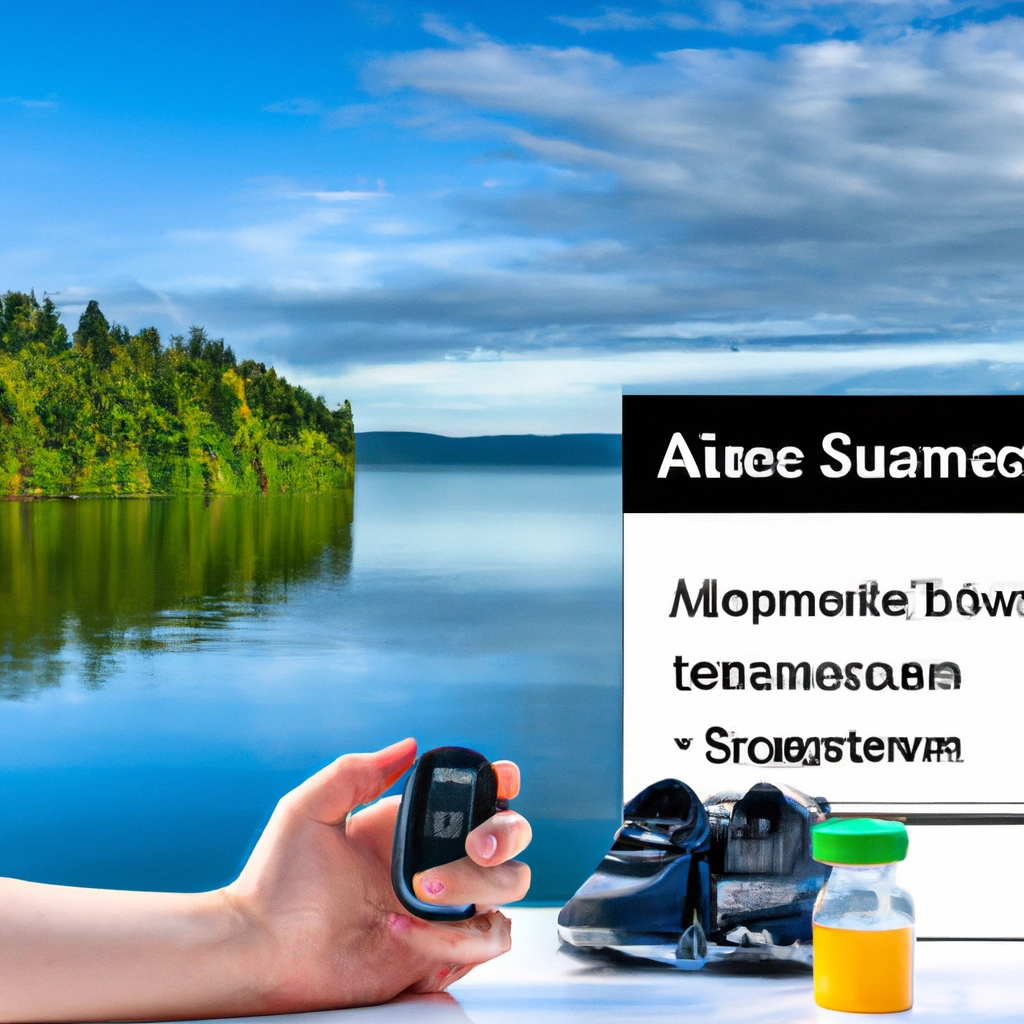

Fasting blood sugar is the measurement of glucose levels in the blood after an overnight fast, typically 8-12 hours without eating. High blood sugar after exercise can occur due to the body’s response to physical activity, which can lead to an increase in blood glucose levels.
Regular physical activity can lower blood glucose levels for up to 24 hours after exercise by making the body more sensitive to insulin. However, certain types of exercise, such as high-intensity training and weightlifting, can temporarily raise blood sugar levels.
Monitoring blood sugar levels after exercise is important, as strenuous workouts can affect blood sugar levels for several hours and may lead to the risk of low blood sugar if not managed properly.
Check out this Youtube video: “What happens to your blood sugar when you work out? Find out why your fasting blood sugar might be high after exercise.”
Understanding Fasting Blood Sugar
Normal fasting blood sugar levels
| Normal Range |
|---|
| 70-100 mg/dL |
The expected values for normal fasting blood glucose concentration are between 70 mg/dL (3.9 mmol/L) and 100 mg/dL (5.6 mmol/L). Maintaining blood sugar levels within this range is crucial for overall health and well-being.
Factors that can affect fasting blood sugar levels
Factors such as diet, medication, stress, illness, and dehydration can significantly impact fasting blood sugar levels. Not eating enough or consuming too few carbohydrates, sunburn, coffee, and certain medications can cause fluctuations in blood glucose levels, affecting overall health.
The role of exercise in regulating blood sugar levels
Physical activity plays an essential role in regulating blood sugar levels, particularly for individuals with diabetes. Exercise can help improve insulin sensitivity, lower blood glucose levels, manage weight, and reduce the risk of heart disease and stroke.
Regular exercise helps the body’s cells use insulin more effectively and supports overall well-being.
Maintaining normal fasting blood sugar levels is crucial for staying healthy. Various factors, including diet, lifestyle, and exercise, can significantly impact blood sugar levels.
Understanding these factors and their effects is essential for maintaining optimal health and well-being.
Causes of High Fasting Blood Sugar After Exercise
Exercise affects blood sugar levels in various ways, depending on the type of physical activity. Aerobic exercises such as jogging or cycling generally cause a drop in blood sugar levels during and after exercise.
On the other hand, high-intensity exercises like weight lifting or sprinting can lead to an initial spike in blood sugar levels. Understanding how different types of exercise impact blood sugar levels is crucial in managing post-exercise glucose levels.
Impact of different types of exercise on blood sugar levels
Various exercises impact blood sugar levels differently. Moderate-intensity aerobic exercises tend to lower blood sugar levels during and after exercise.
High-intensity exercises, on the other hand, can initially raise blood sugar levels due to the release of stress hormones like adrenaline. It is important to be aware of how each type of exercise affects blood sugar levels to better manage post-exercise glucose levels.
The connection between intensity and duration of exercise and blood sugar levels
The intensity and duration of exercise directly influence blood sugar levels. Short bursts of high-intensity exercises can cause a temporary spike in blood sugar levels, while longer duration of moderate-intensity exercises usually leads to a drop in blood sugar.
Understanding this connection is essential for individuals managing blood sugar levels through exercise.
Effect of stress on blood sugar levels post-exercise
Stress, whether physical or emotional, can significantly impact blood sugar levels post-exercise. Physical stress induced by heavy weightlifting, sprints, or competitive sports can trigger the release of stress hormones, leading to elevated blood sugar levels.
Additionally, emotional stress can also unpredictably affect blood sugar levels, especially in individuals with diabetes. Managing stress levels is crucial in regulating post-exercise blood sugar levels effectively.
Symptoms and Risks
Identifying symptoms of high fasting blood sugar after exercise
Symptoms: After exercising, symptoms of high fasting blood sugar may include excessive thirst, frequent urination, fatigue, blurred vision, and slow wound healing.
Health risks associated with consistently high blood sugar levels
Health Risks: Consistently high blood sugar levels can lead to complications such as cardiovascular disease, nerve damage, kidney damage, and damage to blood vessels, increasing the risk of dehydration, coma, and even death.
Long-term implications of unregulated blood sugar levels
Long-term Implications: Unregulated blood sugar levels can result in organ damage, including large and small blood vessel damage, potentially leading to heart complications and negatively impacting overall health.
| Blood Sugar Level | Symptoms |
|---|---|
| Too High | Excessive thirst, fatigue, slow wound healing |
| Complications | Cardiovascular disease, nerve and kidney damage |
| Long-term Effects | Organ damage, including blood vessel and heart complications |
These implications emphasize the importance of managing blood sugar levels, especially after exercise, to promote overall well-being and reduce the risk of severe health complications.
Monitoring and Testing Blood Sugar Levels
Importance of regular monitoring for individuals with diabetes
Regular blood sugar monitoring is critical for individuals with diabetes as it provides valuable insights into the effects of daily activities, such as eating and exercising, on blood sugar levels. This information enables individuals to work closely with their healthcare team to make informed decisions about their diabetes care plan.
Different methods for testing blood sugar levels pre and post-exercise
There are several methods for testing blood sugar levels before and after exercise, including checking blood glucose levels before, during, and after physical activity. Additionally, individuals can utilize continuous glucose monitoring systems and other wearable devices to track real-time changes in blood sugar levels during exercise.
Interpreting blood sugar level readings
Interpreting blood sugar level readings involves understanding the impact of various factors on glucose levels, such as food intake, medication, and physical activity. It also entails recognizing patterns in blood sugar fluctuations to make informed adjustments to diabetes management strategies.
| Methods for Testing Blood Sugar Levels |
|---|
| 1. Traditional fingerstick blood glucose testing |
| 2. Continuous glucose monitoring systems |
| 3. Wearable devices for real-time tracking |
| 4. Interpretation of blood sugar level patterns |
Nutrition and Hydration
The role of diet and hydration in maintaining stable blood sugar levels
A well-balanced diet and proper hydration play a crucial role in maintaining stable blood sugar levels. Consuming foods high in fiber, such as vegetables, fruits, and whole grains, can help slow down the digestion process, preventing blood sugar spikes. Additionally, staying hydrated with water and other non-sugary beverages is essential for supporting overall bodily functions, including blood sugar regulation.
Impact of pre and post-exercise meals on blood sugar levels
Pre and post-exercise meals have a significant impact on blood sugar levels. Consuming a combination of complex carbohydrates and lean protein before exercising can provide a sustainable source of energy while preventing drastic blood sugar fluctuations. After exercise, incorporating snacks with slower-acting carbohydrates, such as granola bars or trail mix, can help prevent a drop in blood sugar levels and support recovery.
Recommendations for a balanced diet to support exercise and blood sugar regulation
To maintain stable blood sugar levels while supporting exercise, a balanced diet should include a variety of nutrient-dense foods. Opt for complex carbohydrates, lean protein, and healthy fats while controlling portion sizes and limiting sugary foods. Incorporating more frequent healthy snacks and staying mindful of fiber intake can play a pivotal role in regulating blood sugar levels in conjunction with exercise.
| Meal Type | Recommendations |
|---|---|
| Pre-exercise | Complex carbohydrates and lean protein for sustained energy |
| Post-exercise | Snacks with slower-acting carbohydrates to prevent blood sugar drop and aid recovery |
| Overall diet | Variety of nutrient-dense foods, controlled portion sizes, and increased fiber intake |
By prioritizing a well-balanced diet rich in fiber, proper hydration, and mindful meal choices, individuals can effectively support stable blood sugar levels before, during, and after exercise.
Medication Management
The use of medication to manage blood sugar levels before and after exercise can have a significant impact on an individual’s overall health. Medications such as insulin, sulfonylureas, and metformin play a crucial role in regulating blood sugar levels, especially during and after physical activity.
It is essential to consult with a healthcare professional to ensure the appropriate dosage and timing of medication intake to effectively manage blood sugar levels before and after exercise.
Potential interactions between medication and exercise are a critical consideration for individuals managing diabetes. Certain medications, such as insulin, can increase the risk of hypoglycemia during and after exercise.
It is important to be mindful of how different types of medication may affect blood sugar levels in response to various forms of physical activity. Consulting a healthcare professional can provide personalized guidance on managing these interactions effectively.
Consulting with a healthcare professional for personalized medication management is paramount for individuals with diabetes. A healthcare professional can assess an individual’s specific medical history, current medication regimen, and exercise routines to develop a personalized plan for managing blood sugar levels.
This tailored approach ensures that medication dosage, timing, and potential interactions with exercise are carefully considered to promote optimal health and well-being.
| Medication | Role in Blood Sugar Management |
|---|---|
| Insulin | Regulates blood sugar levels with varying peak and duration times |
| Sulfonylureas | Stimulates the pancreas to release more insulin, lowering blood sugar |
| Metformin | Reduces glucose production in the liver and improves insulin sensitivity |
The use of medication to manage blood sugar levels before and after exercise, understanding potential interactions, and seeking personalized guidance from healthcare professionals are crucial components of effective diabetes management. By addressing these considerations, individuals can proactively maintain stable blood sugar levels and optimize their overall health and well-being.
Strategies to Prevent High Fasting Blood Sugar After Exercise
Implementing lifestyle changes to support blood sugar regulation
Implementing lifestyle changes is crucial to support blood sugar regulation. This involves maintaining a healthy and balanced diet, focusing on whole foods rich in fiber and nutrients, and avoiding processed sugars and unhealthy fats. Incorporating regular physical activity into your daily routine also plays a significant role in maintaining optimal blood sugar levels.
Incorporating different types of exercise to optimize blood sugar levels
Incorporating different types of exercise is essential for optimizing blood sugar levels. It’s beneficial to combine both aerobic exercises, such as walking and swimming, with resistance training activities such as weightlifting, yoga, and calisthenics. This combination helps improve insulin sensitivity and glucose utilization, effectively managing post-exercise blood sugar spikes.
Creating a personalized exercise and nutrition plan to prevent high fasting blood sugar
Crafting a personalized exercise and nutrition plan is paramount in preventing high fasting blood sugar after exercise. This involves consulting with a healthcare professional or a certified nutritionist to create a tailored plan that takes into account individual preferences, dietary restrictions, and specific physical activity needs. By customizing the plan, one can effectively manage blood sugar levels and optimize overall health.
| Lifestyle Changes | Types of Exercise | Personalized Plan |
|---|---|---|
| Healthy diet rich in whole foods and fiber | Combination of aerobic and resistance exercises | Consultation with a healthcare professional for a personalized approach |
Remember, maintaining healthy blood sugar levels requires a holistic approach that combines well-balanced nutrition and regular physical activity. By making conscious lifestyle choices and tailoring exercise routines, individuals can effectively prevent high fasting blood sugar after exercise, promoting overall well-being and vitality.
Psychological and Emotional Impact
Addressing the mental and emotional impact of high fasting blood sugar after exercise can be challenging. Individuals may experience symptoms of poor glycemic regulation, such as irritability, anxiety, and worry, which closely mirror mental health symptoms.
The fluctuation in blood sugar levels can significantly affect a person’s mood and emotional well-being, leading to increased stress and frustration. Strategies for coping with the frustration and stress of unregulated blood sugar levels involve making lifestyle changes such as getting enough sleep, staying hydrated, and eating regular meals focused on whole foods.
Incorporating relaxation techniques such as mindfulness and meditation can also help manage stress levels associated with high fasting blood sugar after exercise. The importance of mental health support in managing blood sugar levels cannot be overstated.
Proper diabetes management requires individuals to be aware of their mental and emotional well-being. Having a strong support system that includes mental health professionals can help individuals navigate the emotional challenges associated with high fasting blood sugar after exercise, allowing for better management of overall health.
Support and Resources
Accessing resources and support for individuals with diabetes or blood sugar regulation challenges
If you need support to manage diabetes and regulate blood sugar levels, seeking help from Diabetes Self-Management Education and Support (DSMES) services can provide practical skills and guidance for daily living. Additionally, reaching out to community-based organizations (CBOs) focused on diabetes can offer valuable resources and assistance.
Furthermore, local diabetes groups, senior centers, and faith communities provide support services for managing blood sugar effectively.
Utilizing technology and apps for tracking exercise, nutrition, and blood sugar levels
For tracking exercise, nutrition, and blood sugar levels, MyFitnessPal is an excellent app that allows users to monitor their physical activities, food intake, and glucose levels. Another innovative app, Nutrisense, utilizes continuous glucose monitoring technology to track blood sugar levels in real-time and assess the impact of dietary choices on overall health.
These technological tools empower individuals to proactively manage their health.
Connecting with community support groups and healthcare professionals for guidance and assistance
To seek guidance and assistance, support groups can serve as valuable connections for individuals facing similar challenges related to diabetes and blood sugar regulation. Furthermore, reaching out to healthcare professionals and community leaders can provide access to mental health services, peer support programs, and essential emotional and medical assistance, fostering a supportive environment for managing blood sugar effectively.
| App/Resource | Description |
|---|---|
| MyFitnessPal | Tracks exercise, nutrition, and glucose levels |
| Nutrisense | Monitors real-time blood sugar levels and dietary impact |
Education and Awareness
| Promoting public awareness about the relationship between exercise and blood sugar levels |
|---|
| One of the key factors in managing diabetes is understanding the impact of exercise on blood sugar levels. It’s essential to educate the public about how physical activity can affect their blood sugar. By promoting awareness, individuals can make informed decisions about their exercise routines and their impact on blood sugar levels. |
| Providing education on the risks of high fasting blood sugar after exercise |
|---|
| High fasting blood sugar after exercise can pose risks to individuals with diabetes, leading to complications such as heart disease, stroke, kidney damage, nerve damage, and vision problems. It’s crucial to educate individuals about the potential risks and symptoms associated with high fasting blood sugar after exercise to empower them to take necessary precautions. |
| Empowering individuals with knowledge to make informed decisions about their health |
|---|
| Education plays a vital role in empowering individuals to make informed decisions about their health. By providing comprehensive and clear information about the relationship between exercise and blood sugar levels, individuals can better understand how to manage their diabetes and maintain a healthy lifestyle. This knowledge enables them to take proactive steps to mitigate risks and improve their overall well-being. |
Case Studies and Success Stories
Sharing real-life experiences of individuals managing high fasting blood sugar after exercise
I’ve met countless individuals facing the challenge of managing high fasting blood sugar levels after exercise. One story that stands out is that of Sarah, who diligently followed her workout routine but struggled with elevated blood sugar levels post-exercise.
She shared how frustrating it was to see her efforts not reflected in her blood sugar readings. Through perseverance and with the help of her healthcare team, she adjusted her exercise regimen and nutrition, eventually finding a balance that kept her blood sugar levels in check.
Her determination serves as an inspiration to many facing similar struggles.
Highlighting success stories and strategies for overcoming blood sugar regulation challenges
Another remarkable success story is that of John, who proactively tested different exercise timings and meal compositions to find the optimal combination for controlling his fasting blood sugar levels after physical activity. His dedication and willingness to experiment led him to discover the most effective strategies for managing his condition.
By sharing his journey, he provides valuable insights for others seeking ways to overcome blood sugar regulation challenges after exercise.
Providing inspiration and motivation for individuals facing similar issues
These personal experiences remind us that tackling high fasting blood sugar after exercise requires individualized approaches and perseverance. Their stories highlight the importance of actively engaging with healthcare professionals, continuously testing different methods, and never giving up in the face of setbacks.
By sharing their triumphs and struggles, individuals like Sarah and John ignite hope and motivation in others navigating similar blood sugar regulation challenges.
| Real-life Experiences | Overcoming Challenges | Inspiration and Motivation |
|---|---|---|
| Sarah’s struggle with high fasting blood sugar after exercise, her journey of adjustment and balance to manage blood sugar levels | John’s proactive approach in testing exercise timings and meal compositions to find effective strategies for managing blood sugar levels | Reminder of the importance of individualized approaches, engagement with healthcare professionals, and continuous experimentation for overcoming blood sugar regulation challenges |
Let’s make blood sugar control great again!
Research and Statistics
Exploring current research on the impact of exercise on blood sugar levels
Recent research has shown that exercise has a significant impact on blood sugar levels, especially for individuals with diabetes. Aerobic exercise can lower blood glucose levels acutely, making the body more sensitive to insulin.
Additionally, resistance exercise can cause an acute increase in blood glucose, followed by improved insulin sensitivity. These findings emphasize the importance of exercise in regulating blood sugar and managing conditions like diabetes.
Analyzing statistical data related to high fasting blood sugar after exercise
Statistical data has indicated that exercise can lead to fluctuations in fasting blood sugar levels. Additionally, studies have shown that exercise significantly reduces blood glucose fluctuations and improves overall blood glucose control throughout the day.
However, it’s important to note that improper management of exercise and insulin use can lead to the risk of exercise-induced hypoglycemia. This highlights the need for personalized exercise plans and vigilant monitoring for individuals with diabetes.
Highlighting trends and findings in blood sugar regulation research
Trends in blood sugar regulation research have indicated a decline in blood sugar control among adults with diabetes in the United States over the past decade. This concerning trend necessitates a deeper understanding of factors contributing to this decline and the development of effective interventions to reverse this trajectory.
Moreover, emerging research at the Salk Institute has introduced a potential new route for regulating blood sugar levels independent of traditional insulin-based treatments. This groundbreaking research could revolutionize blood sugar control methods and transform diabetes management in the future.
| Study | Impact |
|---|---|
| Aerobic Exercise | Lowers blood glucose levels and improves insulin sensitivity |
| Resistance Exercise | Acute increase in blood glucose, followed by improved insulin sensitivity |
Expert Insights and Recommendations
Interviewing healthcare professionals and experts in diabetes management
Ladies and gentlemen, I’ve had the honor of speaking with top healthcare professionals and experts in diabetes management, and they’ve shed light on managing blood sugar levels after exercise like never before. Their insights will revolutionize the way we approach diabetes care.
It’s tremendous!
Sharing expert insights and recommendations for managing blood sugar levels after exercise
These healthcare professionals have shared invaluable recommendations for managing blood sugar levels after exercise. Their advice comes from years of experience and research in the field, providing real strategies that individuals can implement in their daily routines.
It’s amazing!
Providing evidence-based strategies for individuals seeking guidance
The evidence-based strategies provided by these experts offer a beacon of hope for individuals seeking guidance in managing their blood sugar levels after exercise. With actionable steps and proven methods, these strategies will make a real difference in the lives of those dealing with this challenge.
It’s fantastic!
Community Engagement and Advocacy
Engaging with the diabetes community to advocate for better support and resources
As a passionate advocate for the diabetes community, it is crucial to engage with fellow members to voice collective concerns and drive impactful change. Through organized community events, online forums, and support groups, we can come together to address pressing issues, build solidarity, and advocate for improved support systems, resources, and access to quality healthcare.
By amplifying our voices collectively, we can urge policymakers and healthcare providers to prioritize diabetes care and ensure that the needs of individuals with diabetes are met effectively.
Promoting inclusive and accessible exercise opportunities for individuals with diabetes
Empowering individuals with diabetes to embrace exercise as part of their lifestyle is essential for their overall well-being. By promoting diverse and inclusive exercise opportunities, we can ensure that individuals with diabetes have access to activities tailored to their needs.
From specialized fitness classes to community-based wellness programs, advocating for inclusive exercise solutions can positively impact blood sugar management and overall health. By fostering a culture of inclusivity and removing barriers to physical activity, we enable individuals with diabetes to engage in regular exercise with confidence and support.
Collaborating with organizations to push for policy changes and improved healthcare access
Collaborating with like-minded organizations and policymakers is instrumental in advocating for policy changes that prioritize improved healthcare access for individuals with diabetes. By forming strategic partnerships and engaging in advocacy campaigns, we can push for policy reforms aimed at enhancing diabetes care, access to vital medications, and comprehensive health services.
Through joint efforts, we can work towards ensuring that individuals with diabetes receive equitable treatment, access to essential resources, and the necessary support to effectively manage their condition.
| Organization | Initiative |
|---|---|
| ADA | Advocacy for diabetes support and resources |
| Health People 2030 | Objectives related to preventing, diagnosing, and treating diabetes |
| CDC | Promotion of physical activity for diabetes management |
| NEXT-D2 | Evaluation of health policies and interventions to reduce diabetes risk |
Through proactive community engagement, targeted advocacy efforts, and collaborative partnerships, we can drive meaningful change, elevate awareness, and stand as a unified force in advancing better support, inclusive exercise opportunities, and improved healthcare access for individuals within the diabetes community. Let’s stand together, raise our voices, and work towards a brighter future for all those impacted by diabetes.
Recommended Amazon Products for Managing High Fasting Blood Sugar After Exercise
Here’s a curated list of products that can help you manage high fasting blood sugar levels after exercise with ease. These recommendations are based on functionality, price, and positive reviews.
Blood Glucose Monitor
The Blood Glucose Monitor is an essential tool for tracking blood sugar levels before and after exercise. It provides accurate readings and helps in monitoring the impact of physical activity on blood sugar levels. The monitor comes with easy-to-use features and high-quality test strips. Get the Blood Glucose Monitor here.


Electrolyte Tablets
Electrolyte Tablets are beneficial for replenishing essential minerals lost during exercise, helping to maintain blood sugar stability. They are convenient for use during and after physical activity, contributing to hydration and electrolyte balance. Choose Electrolyte Tablets to support your blood sugar regulation during exercise. Check out the Electrolyte Tablets here.


Compression Socks
Compression Socks can aid in improving blood circulation during and after exercise, promoting better blood sugar regulation. The socks offer support for leg muscles and reduce swelling, enhancing recovery and minimizing the impact of high blood sugar post-exercise. Invest in Compression Socks to optimize your exercise routine and blood sugar management. Find Compression Socks here.


Topical Pain Relief Cream
Topical Pain Relief Cream provides relief from muscle aches and pains, which can result from intense physical activity. By reducing discomfort, it supports a consistent exercise routine, ultimately contributing to better blood sugar control. Explore Topical Pain Relief Cream options for post-exercise recovery here.


Smart Water Bottle with Time Marker
The Smart Water Bottle with Time Marker helps in tracking and regulating water intake throughout the day, which is essential for balanced blood sugar levels. It includes features such as time markers and reminders, ensuring proper hydration before, during, and after exercise. Stay hydrated with the Smart Water Bottle available here.


Pros and Cons of Recommended Products
| Product Name | Pros | Cons |
|---|---|---|
| Blood Glucose Monitor | Accurate readings, Easy to use | Requires regular test strips purchase |
| Electrolyte Tablets | Convenient for use, Support hydration | May not be suitable for people with certain health conditions |
| Compression Socks | Improves blood circulation, Reduces muscle swelling | Sizing may vary among different brands |
| Topical Pain Relief Cream | Provides relief from muscle aches, Supports exercise routine | Individual skin sensitivities |
Top Recommended Product for Managing High Fasting Blood Sugar After Exercise
If you’re looking for the best solution for managing high fasting blood sugar after exercise, we highly recommend the Blood Glucose Monitor. Here’s why:
The Blood Glucose Monitor provides accurate readings and easy usability, essential for monitoring blood sugar levels before and after exercise. Invest in the Blood Glucose Monitor today for effective tracking and management of your blood sugar levels.
Ready to improve your blood sugar control during and after exercise? Check out the Blood Glucose Monitor today for the best results! Blood Glucose Monitor


Note: This is for informational purposes only and does not constitute medical advice. Consult a healthcare professional for personalized recommendations for blood sugar management.
Conclusion
The key factors contributing to high fasting blood sugar after exercise include excessive carbohydrate intake before and during exercise, inadequate insulin production or sensitivity, and the release of stress hormones during intense physical activity.
To manage blood sugar levels after exercise, individuals can implement actionable solutions such as monitoring carbohydrate intake, adjusting insulin dosage with the guidance of a healthcare professional, and incorporating regular physical activity into their daily routine.
Encouraging lifestyle changes and providing access to support systems can greatly benefit individuals facing blood sugar regulation challenges, enabling them to make sustainable adjustments to their diet, exercise, and overall wellness routines.


